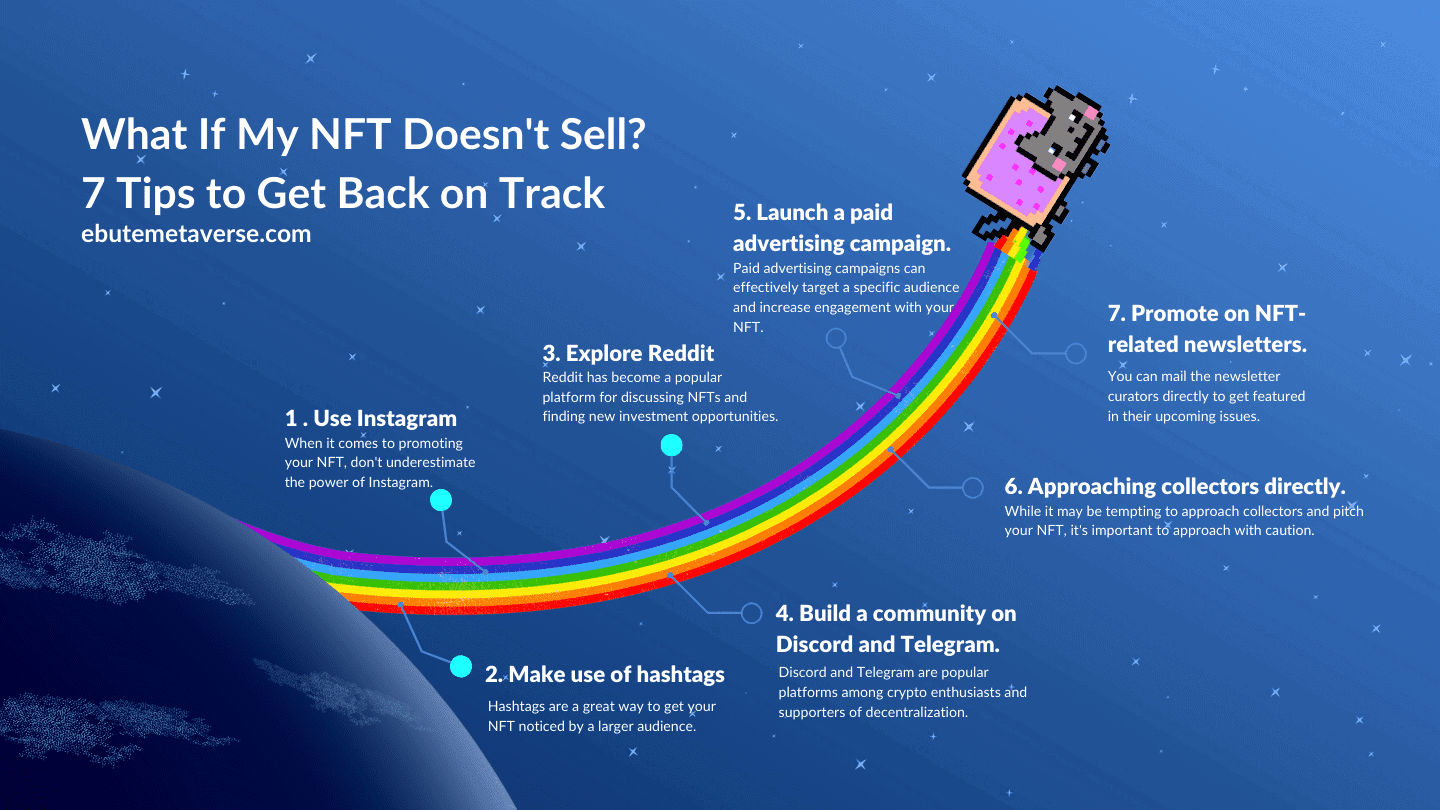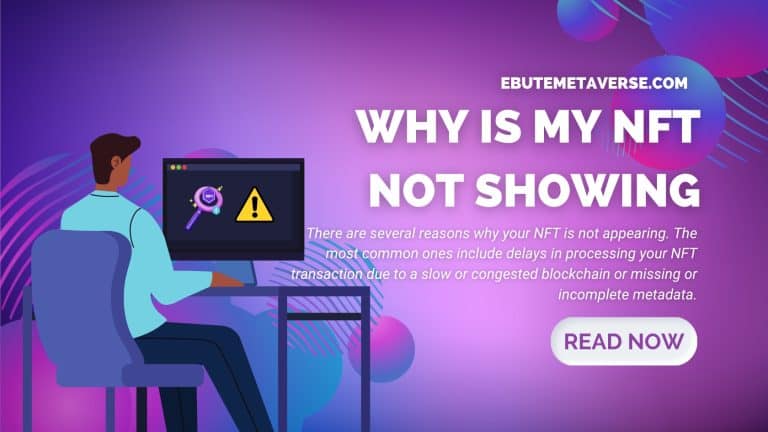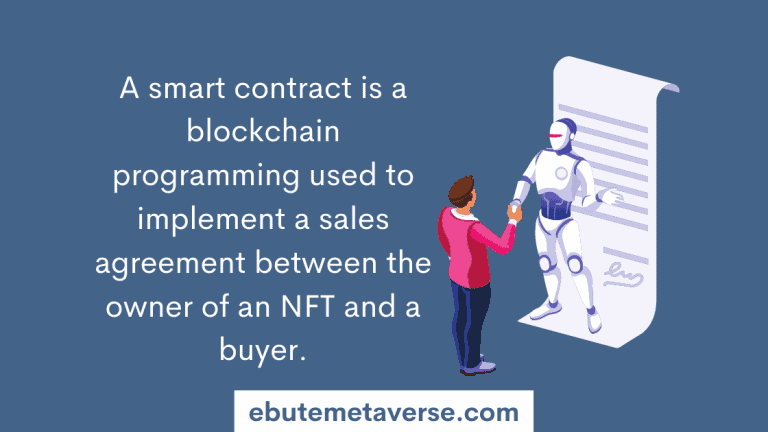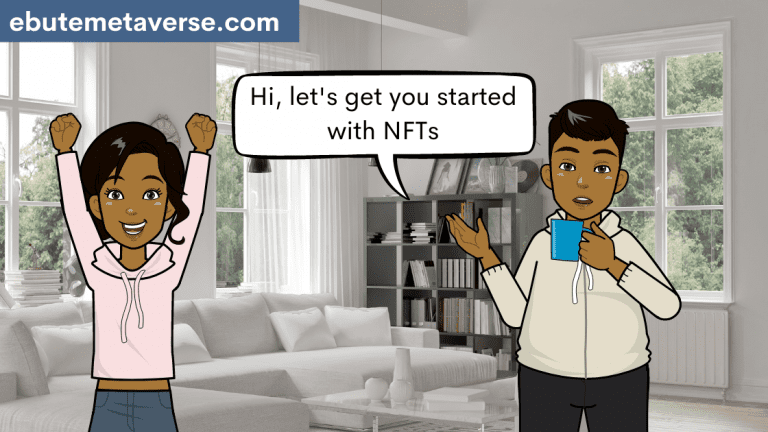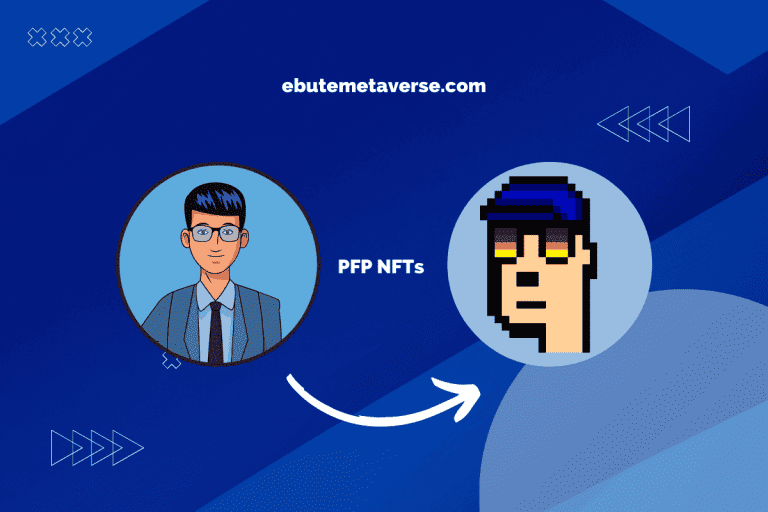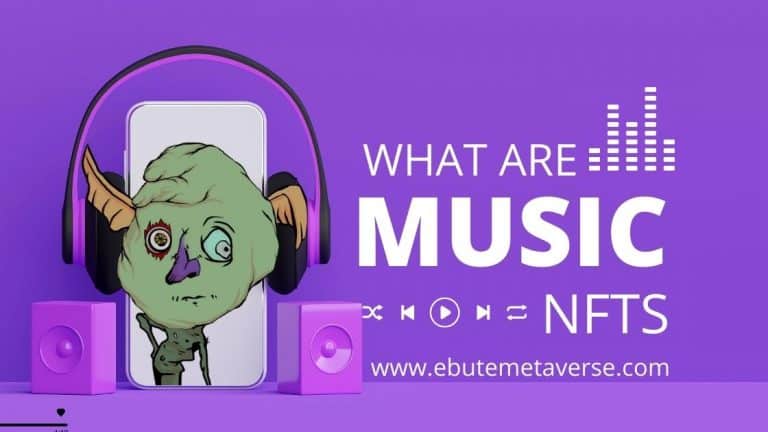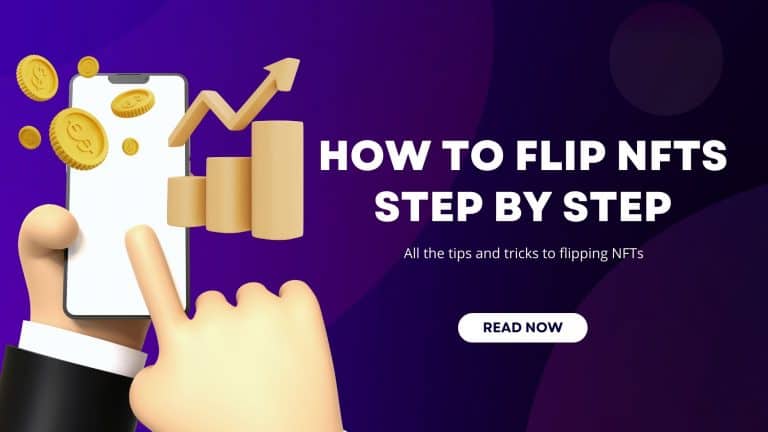What If My NFT Doesn’t Sell? Here’s What to Do
Creating an NFT is simple. Selling it, however, not quite. And according to statistics, over 80% of NFT projects are going to fail! This data indicates that most NFTs won’t sell despite the hype surrounding the industry.
Now that you know the odds, you’re probably wondering what to do next.
Don’t press the panic button just yet!
If your NFT doesn’t sell, you can delist and relist them for sale. However, you may have to pay extra gas fees for relisting.
The other way to make your NFT sell after stagnation is to create hype around the project. The idea is that when more people know about the NFT and its benefits, new buyers will come in and pick them up.
This article will answer the question, “What If My NFT Doesn’t Sell?” We’ll explore the various reasons why your NFT may not be selling.
In addition, we’ll provide actionable tips and strategies to help increase your chances of success in the NFT market.
Whether you’re a seasoned NFT creator or just starting, this article will provide valuable insights to help you navigate the competitive NFT market.
What Happens When an NFT Doesn’t Sell Out?
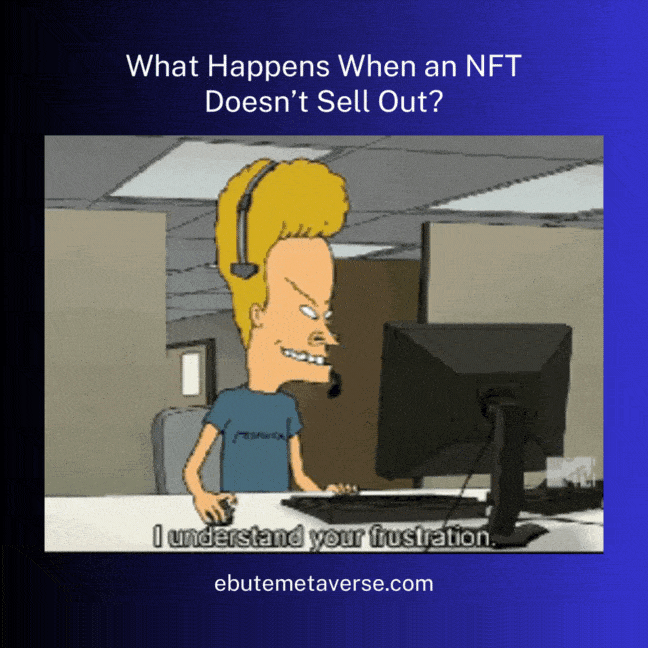
If your NFT fails to sell during an auction or doesn’t receive any offers, you don’t have to worry, as it still belongs to you. You can remove the listing and re-list when there’s interest in the collection. Not that relisting will cost extra gas fees. You also have the option to remove it by burning the token. Some blockchains reward you for burning NFTs.
It’s essential to evaluate your promotion strategy and where you’re advertising your NFT. Are you utilizing social media platforms such as Twitter? This is a good place to start.
We have a full guide on how to burn an NFT if you’re considering it.
What if My NFT Doesn’t Sell? Top Reasons Why
Here are six of the common reasons why your NFTs might not be selling:
1. You’re not well known
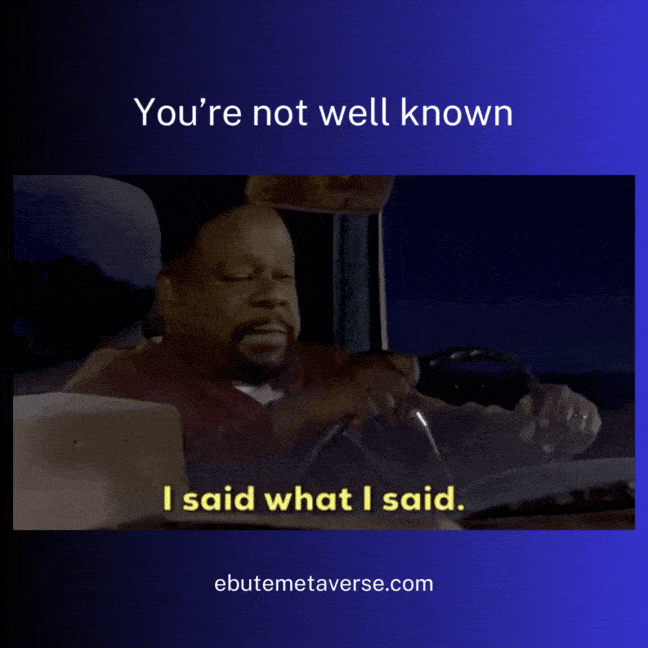
Many aspiring creators face this common struggle. Even if your artwork is excellent, it can be overlooked if you are new to the scene. While there is the possibility that a buyer may purchase your artwork if it is exceptional, it’s not always guaranteed.
So, how do you increase your reputation in the NFT space as an artist?
You can boost your visibility as an NFT creator by employing different strategies. Some of these include gifting to increase social signals and giving back to the community. In addition, you can also collaborate with other artists, share your work, or document your creative process to gain more exposure.
Another effective way beginner artists gain notoriety is by setting themselves apart from others in the field. By offering a fresh perspective on what is already available and providing value to consumers, you can distinguish yourself and attract a broader audience.
2. No social media presence
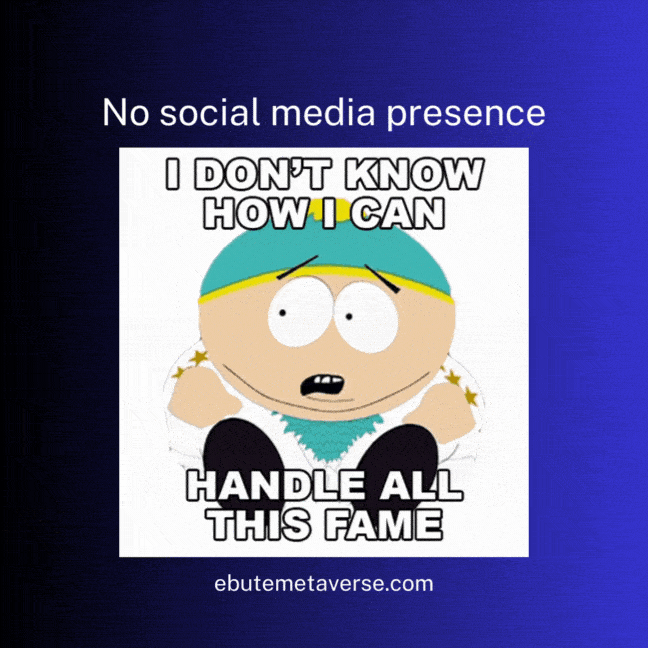
Having a social media presence is crucial for an artist in the NFT sector. Without one, potential buyers could question your project’s legitimacy.
Twitter and Discord are two primary sources of information for anything NFT, and you should focus on building a presence on both platforms. Connecting with potential customers on a personal level can increase the chances of receiving support for your project.
We understand that managing social media accounts can be time-consuming and might not be your forte. In such cases, hiring a moderator for a Discord server or outsourcing social media management to a freelancer could be a viable solution.
3. No community
Building a community is crucial for the launch of a successful NFT project. Unfortunately, some creators underestimate the importance of the community-building aspect of social media. But if you want to sell your NFTs, you need customers who share your values.
While growing your audience on social media is great, it’s more important to convert them into active community members. For example, if a potential customer joins a Discord channel and sees only a few inactive users, they may leave without engaging.
That’s why you must frequently interact with your audience to increase enthusiasm for your project and build trust. Using bots to welcome new users can be a simple way to create a friendly environment until an artist or moderator can interact personally.
Building a community on social media can be challenging, but with a little hard work, it can transform from a group of inactive users to a thriving entity.
4. You’re not Marketing Enough
Traditional advertising can be crucial to the success of an NFT collection. Relying solely on word of mouth may not be enough to attract buyers, as some creators have learned the hard way. In fact, some of the most successful NFT collections have had strong marketing and hype behind them.
If you’re preparing to launch a new collection, generating buzz and excitement well in advance is important. This can involve dropping hints and updates about the upcoming collection over the course of weeks or even months.
Consider teasing your audience with a blacked-out version of an NFT or a riddle that they must solve in order to learn more. By creating intrigue and anticipation, you can build a following that is eager to purchase the collection when it drops.
5. You’re marketing too much
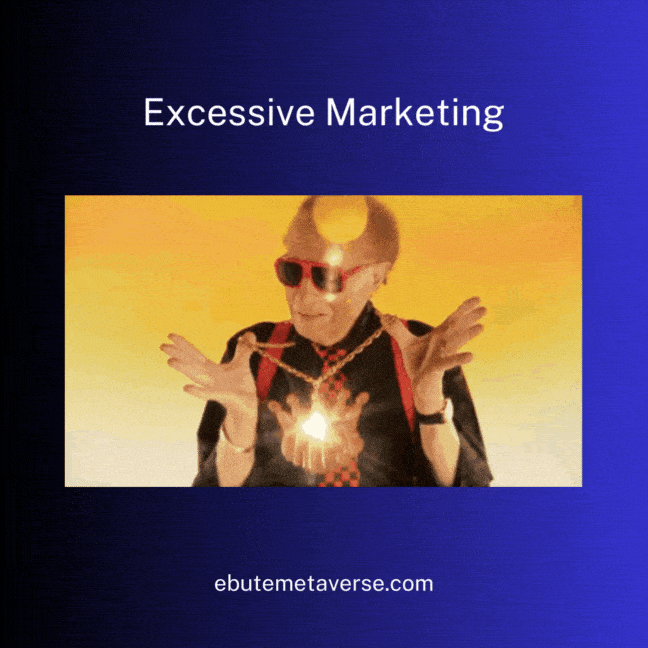
It’s important to strike a balance when it comes to marketing your NFT collection. Overdoing it can cause your project to flop. For example, repeatedly posting the same message and links to your collection in various forums can turn off potential buyers. Even worse, your audience starts to question the project’s value or demand.
Even though self-promotion is crucial, it’s better if the support for the project comes from collectors or other interested parties. Some collections have a loyal following that is more than happy to spread the word about a project’s merits.
6. Pricing
Many creators struggle with setting the initial price for their NFTs. If your NFT is priced too high, it may not attract potential buyers, resulting in zero sales and a loss of Ether. That’s why it’s crucial to research similar NFT prices and set a competitive price that provides value to buyers.
What If My NFT Doesn’t Sell? 7 Tips to Get Back on Track
So what if my NFT doesn’t sell? What can I do to rectify the situation?
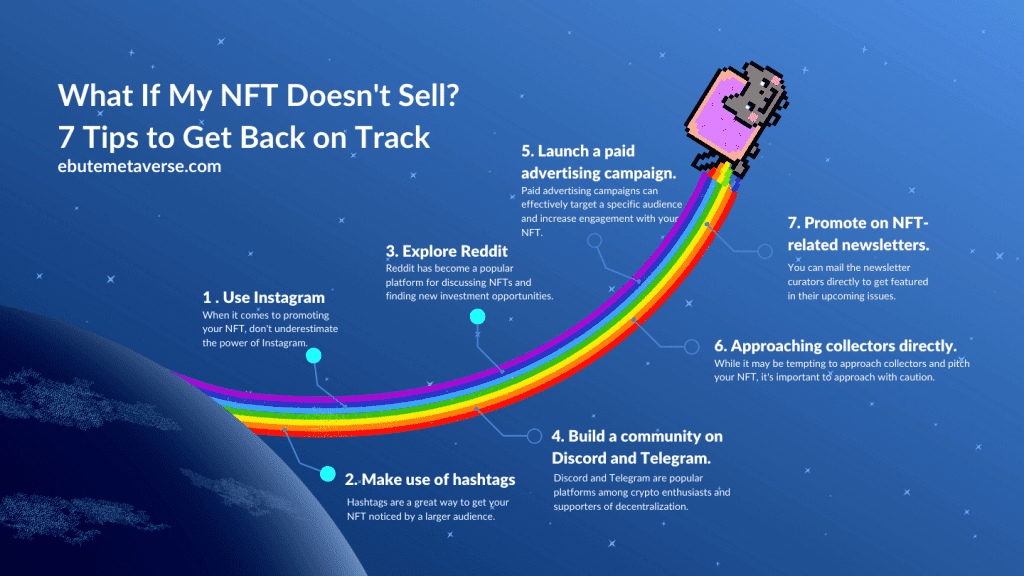
1. Use Instagram
When it comes to promoting your NFT, don’t underestimate the power of Instagram. Even if your following is small, the platform is still a great place to showcase your portfolio and share your current and past projects. Collectors are often interested in the evolution of an artist’s work, and Instagram can help you highlight that. Our guide on marketing an NFT on Instagram should help.
2. Make use of hashtags.
Hashtags are a great way to get your NFT noticed by a larger audience. Research and use your niche’s most popular and relevant hashtags to reach a wider audience.
3. Explore Reddit
Reddit has become a popular platform for discussing NFTs and finding new investment opportunities. There are several subreddits dedicated to buying and selling NFTs, so it’s worth exploring and promoting your NFTs there.
You can also check out our guide on promoting NFTs on Reddit to see how you can get more eyes on your collection.
4. Build a community on Discord and Telegram.
Discord and Telegram are popular platforms among crypto enthusiasts and supporters of decentralization. By joining groups or channels related to your niche, you can promote and increase awareness of your NFT and grow your community.
5. Launch a paid advertising campaign.
Paid advertising campaigns can effectively target a specific audience and increase engagement with your NFT. Most social media platforms offer paid advertisements, so research your options and target your ads to the right audience.
6. Approaching collectors directly.
While it may be tempting to approach collectors and pitch your NFT, it’s important to approach with caution. As a rule of thumb, it’s safer to only communicate with those who have previously purchased your work or placed a bid on an auction.
7. Promote on NFT-related newsletters.
There are several NFT trend hunters who scour the market for the most promising works. Subscribing to their newsletters can provide insights into market trends and opportunities to pitch your NFT. You can even mail the newsletter curators directly to get featured in their upcoming issues.
We’ve compiled a list of some of the best NFT newsletters where you can promote your NFT, including our newsletter.
If you want to join our newsletter, you can sign up by clicking here.
Conclusion
If you’re struggling to sell your digital artwork, understand that a lack of sales doesn’t signify the end of the road. Your NFT might not be selling because of your lack of popularity, community or social media presence, and ineffective marketing and pricing strategies.
By following the tips outlined in this article, you can increase the visibility of your NFT and attract new customers. It’s also crucial to keep experimenting with different strategies until you find the one that works best for you.
FAQ
What Happens If Your NFT Doesn’t Sell on OpenSea
If your NFT fails to sell on Opensea, you can keep it in your wallet and relist it later. OpenSea allows you to remove and re-mint the NFT, but this comes with higher gas fees. Alternatively, you can promote it on social media or other NFT marketplaces to increase visibility and attract potential buyers.
What Happens If No One Bids on My NFT?
If your NFT doesn’t sell on OpenSea, you can choose to settle the auction if there are no more bids before the timer expires. This action returns the NFT to your wallet. Note that settling is only possible after the auction closes.
Can You Make an NFT and Not Sell It?
Yes, it’s possible to create an NFT without selling it. Several NFT marketplaces, such as OpenSea, Rarible, NBA Top Shots, and Binance, allow users to mint their own NFTs.
Is It Hard to Resell an NFT?
In general, selling an NFT can be difficult if you don’t have an existing customer base. However, if the NFT is from a popular collection, it might be easy to resell your NFT, leveraging on its popularity.
How to Know If Your NFT Will Sell
The chances of an NFT selling are increased by factors such as the artist’s reputation, the uniqueness of the artwork, and market trends, but there is no guarantee of a sale.

